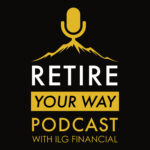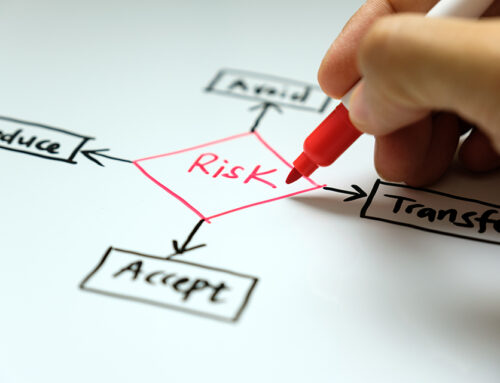 1 – Introduce Portfolio Diversity
1 – Introduce Portfolio Diversity
Diversification in this context means selecting multiple different assets to invest in as opposed to choosing one to put all your money into. Furthermore, diversifying between sectors and industries may also help isolate a losing investment and help protect yourself from having to make up ground after a steep loss.
2 – Add Non-Correlating Assets to the Mix
Introducing non-correlating assets to your portfolio refers to the idea of taking diversification one step further by investing in different asset classes altogether. We’ve seen the whole stock market decline at the same time, no matter how diversified across industries your portfolio is. So non-correlating assets would refer to bonds, commodities, stocks, real estate, and other assets that don’t operate in the same markets.
3 – Take Advantage of Dividend Opportunities
Dividends can act as a buffer to losses which can help protect your downside risk significantly. In addition, companies often don’t change their payout rations based on daily stock market performance, making them a great protection against volatility as well. If your investment lost 3%, but you earned 3% via a dividend, then there is essentially no lost ground to make up.
4 – Fixed-Income Investments
Fixed income may not sound flashy or enticing right off the bat, but when it comes to the robust wealth and income strategy you expect over the course of your retirement, fixed-income investments such as high-yield savings accounts, treasury notes, and certificate deposits are structured to generate income without being tied to a market that can experience volatility such as stocks or real estate, making these types of investments suitable for downside risk protection.
5 – Annuities
Annuities are multifaceted insurance-based investment products structured to generate income in retirement. Some annuities come with many different forms of downside risk protection in the form of non-stock market income or principal protection. Some may even help you protect against risks or costs you may need to cover in your own life, making them a loss-protection option worth considering.
Sources:























 Megan Jones joined the ILG Financial team in 2020 as marketing director. Megan and her husband live in Fredericksburg, VA with their German Short Haired Pointer, Gus. Megan is a graduate of Longwood University and holds a degree in communications. Megan is the oldest of Dave Lopez’s three children and not only enjoys working alongside her father, but also with her cousin, Chase, who joined the ILG Financial team in 2020 as an advisor. Megan is also a fully licensed Life, Health, and Annuity agent. When not at work, Megan enjoys sitting on the back porch with family and friends enjoying food and music.
Megan Jones joined the ILG Financial team in 2020 as marketing director. Megan and her husband live in Fredericksburg, VA with their German Short Haired Pointer, Gus. Megan is a graduate of Longwood University and holds a degree in communications. Megan is the oldest of Dave Lopez’s three children and not only enjoys working alongside her father, but also with her cousin, Chase, who joined the ILG Financial team in 2020 as an advisor. Megan is also a fully licensed Life, Health, and Annuity agent. When not at work, Megan enjoys sitting on the back porch with family and friends enjoying food and music. Chase Lopez joined the ILG Financial team in 2020 as an advisor. Chase is a 2016 James Madison University graduate with a degree in management. Chase has been trained under the tutelage of Dave Lopez, who is not only the founder and managing member of ILG Financial, but also is Chase’s uncle and godfather. He also enjoys working alongside his cousin, Megan, who is Dave’s daughter.
Chase Lopez joined the ILG Financial team in 2020 as an advisor. Chase is a 2016 James Madison University graduate with a degree in management. Chase has been trained under the tutelage of Dave Lopez, who is not only the founder and managing member of ILG Financial, but also is Chase’s uncle and godfather. He also enjoys working alongside his cousin, Megan, who is Dave’s daughter. Amy Anderson joined the ILG Financial team in 2023 as the client relations coordinator. Her responsibilities include scheduling of appointments, annual check-up notifications, and annuity and required minimum distribution assistance. She is a graduate of Harding University with a degree in Computer Information Systems. Amy and her husband have two children and she enjoys reading, crocheting, music and spending time with her family.
Amy Anderson joined the ILG Financial team in 2023 as the client relations coordinator. Her responsibilities include scheduling of appointments, annual check-up notifications, and annuity and required minimum distribution assistance. She is a graduate of Harding University with a degree in Computer Information Systems. Amy and her husband have two children and she enjoys reading, crocheting, music and spending time with her family. Jessica Carson joined the ILG Financial team in 2018 as an agent. Jessica and her husband have four children, two dogs, 3 barn cats, 5 chickens, and three parakeets. She indeed loves her children and pets! When not at work, Jessica enjoys playing the piano and cello as well as traveling and spending time outside with her family, hiking, fishing, and boating.
Jessica Carson joined the ILG Financial team in 2018 as an agent. Jessica and her husband have four children, two dogs, 3 barn cats, 5 chickens, and three parakeets. She indeed loves her children and pets! When not at work, Jessica enjoys playing the piano and cello as well as traveling and spending time outside with her family, hiking, fishing, and boating. Terri Center joined the ILG Financial team in 2019 as client services manager. She handles client records, application processing, and gathering information to provide a professional and friendly experience with all of our clients. Terri is a graduate of Oakland University. She is married and has two children. She enjoys hiking, family time, and puzzle challenging video games. She also likes to share her creativity in her canvas paintings and sewing projects.
Terri Center joined the ILG Financial team in 2019 as client services manager. She handles client records, application processing, and gathering information to provide a professional and friendly experience with all of our clients. Terri is a graduate of Oakland University. She is married and has two children. She enjoys hiking, family time, and puzzle challenging video games. She also likes to share her creativity in her canvas paintings and sewing projects.